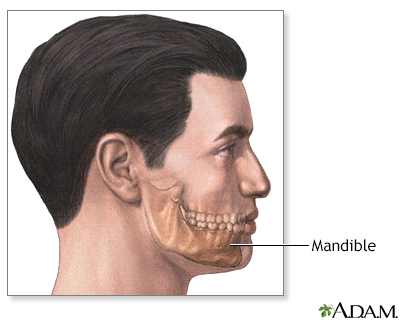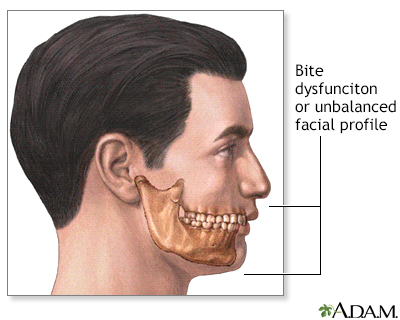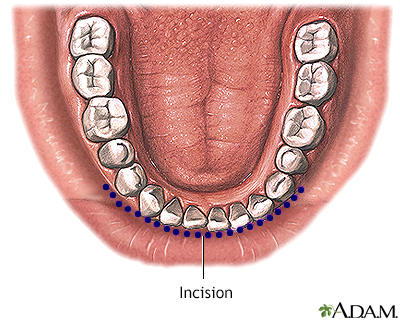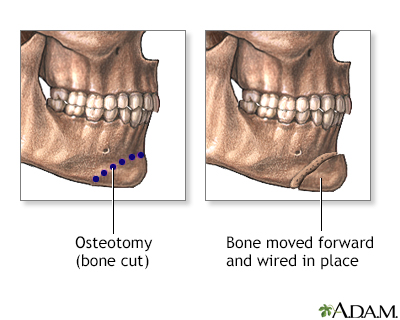Chin augmentation
| Normal anatomy |
|
The mandible, or lower jaw, determines much of the facial profile and the alignment of the upper and lower teeth. The teeth must be properly aligned for a normal dental bite.
|
|
| Indications |
|
The best candidates for chin augmentation or genioplasty are patients with weak or receding chins (microgenia), but with a normal dental bite. Expectations of looking and feeling better after surgery should be discussed with the plastic surgeon before any surgery, keeping in mind that the desired result is improvement, not perfection.
The facial profile can be balanced by extending the chin in relationship to the nose. Reconstructive genioplasty to correct bite dysfunction can be performed in conjunction with jaw surgery. Thousands of genioplasties are performed successfully each year.
Surgery may be performed in the surgeon's office-based facility, a hospital, or an outpatient facility.
|
|
| Incision |
|
One surgical approach is to make an incision inside the mouth along the inferior sulcus (a landmark inside the jaw) to gain access to the chin bone. There is no incision made on the skin.
|
|
| Procedure |
|
A horizontal cut (called an osteotomy) is made through the jaw bone (mandible) with a bone saw or chisel. The lower portion of the separated bone is moved forward to the desired position and wired in place. The neurological nerves are carefully protected. The incision is closed with sutures and an external pressure dressing is applied. There is no visible scarring since the surgery is performed through an incision inside the mouth.
|
|
| Aftercare |
|
There is some discomfort and soreness, which is easily controlled by medication. A liquid diet may be advised for a day or two. Light activity can resume the same day as surgery. Return to work and usual activity is allowed within 7 to 10 days. Within a week of surgery, the external dressing is usually removed.
|
|

|
Review Date:
2/5/2025
Reviewed By:
Tang Ho, MD, Associate Professor, Division of Facial Plastic and Reconstructive Surgery, Department of Otolaryngology – Head and Neck Surgery, The University of Texas Medical School at Houston, Houston, TX. Also reviewed by David C. Dugdale, MD, Medical Director, Brenda Conaway, Editorial Director, and the A.D.A.M. Editorial team. |
The information provided herein should not be used during any medical emergency or for the diagnosis or treatment of any medical condition. A licensed medical professional should be consulted for diagnosis and treatment of any and all medical conditions. Links to other sites are provided for information only -- they do not constitute endorsements of those other sites. No warranty of any kind, either expressed or implied, is made as to the accuracy, reliability, timeliness, or correctness of any translations made by a third-party service of the information provided herein into any other language. © 1997-
A.D.A.M., a business unit of Ebix, Inc. Any duplication or distribution of the information contained herein is strictly prohibited.
© 1997-

All rights reserved.






